Results 5,951 to 5,960 of 12096
Thread: Anandtech News
-
05-02-16, 11:30 PM #5951
Anandtech: NVIDIA Releases 365.10 WHQL Game Ready Driver
With more game releases and open betas coming down the pipe this spring, driver developers are getting busy preparing our graphics cards for the new games. This time NVIDIA brings us a handful of fixes and a suite of game ready support updates.
NVIDIA driver version number 365.10 is a continuation of the 364 driver branch. Included are several bug fixes, including one for when one daisy-chained monitors, FPS drops in games with the previous driver build, and SLI control panel issues under Windows 10. Also, Dark Souls III performance has been fixed under Windows 7, 8 and 8.1, as performance under that game was sometimes poor in earlier driver releases.
Moving on to game ready support we have a few upcoming games. On the list we have Battleborn by Gearbox Software which is seeing release this week. Following along we have Forza Motor Sport 6: Apex by Turn 10, Overwatch by Blizzard and Paragon by Unreal Studios which all will have beta’s open this week.
Anyone interested can download the updated drivers through GeForce Experience or on the NVIDIA driver download page.
More...
-
05-03-16, 07:51 AM #5952
Anandtech: Comtrend PG-9172 Powerline Adapter Review: G.hn Gets Primed for Retail Pus
The battle between HomePlug and HomeGrid to emerge as the de-facto powerline networking standard was quite interesting between 2010 and 2013. However, despite silicon getting demonstrated at various trade shows, G.hn was unable to get a retail product out for a long time. This changed last summer, when Comtrend introduced the PG-9172, a 1200 Mbps G.hn powerline adapter. In this review, we take a look at the performance of the Comtrend PG-9172, and how it compares to some of the HomePlug products already in the market. With Arris launching a suite of G.hn networking products under the RipCurrent branding last month, we also analyze whether G.hn is finally ready for retail prime time.
More...
-
05-03-16, 07:51 AM #5953
Anandtech: HP Unveils Premium Chromebook: 3K Display, Intel Core M, 16 GB of RAM and
HP has announced a new family of Chromebooks, which are powered by Intel’s high-performance processors and feature stylish design, aluminum body, high-resolution display and even Bang & Olufsen speakers. The new laptops will not be as affordable as many other mobile PCs running Google Chrome OS and will not be as powerful as Google’s Pixel, however, this is what HP believes to be the right balance between performance, style, portability and price.
When Acer and Samsung introduced their first notebooks based on Google’s Chrome OS in mid-2011, they praised their low price and mainstream computing capabilities. At the time, Chrome OS was a mystery for most people, netbooks were relatively popular and it made sense for the aforementioned PC makers and Google to address the entry-level segment of the market with something very affordable. As Chrome OS gained traction, PC makers began to install higher-performing components into their Chromebooks. However, they were still not ready to address the high-end market segment with such PCs, which is why Google released its Pixel laptop in 2013. The Chromebook Pixel is one the most advanced and stylish Chromebooks ever made because of its Core i7 “Broadwell” CPU, a display with 2560×1700 resolution and 3:2 aspect ratio. But, the Pixel costs $999 and not all users are ready to invest that sum in a Chromebook. Fortunately, different PC makers offer various systems that attempt to replicate some of the Pixel’s features. HP decided to build its own competitor for Google’s Pixel and while the product is not exactly affordable, it has a better screen than most Chromebooks and a number of other advanced features.
The HP Chromebook 13 sports a 13.3” IPS display with 3200×1800 resolution (QHD+), 170-degree viewing angles and 16:9 aspect ratio, which is good for multimedia applications and video. HP’s latest Chromebook comes in brushed anodized aluminum chassis, it is 12.9 mm thick and weighs 1.29 kilograms (2.86 pounds), which is thinner and lighter than Apple’s MacBook Air 13”. Despite the very high resolution screen, the laptop works up to 11.5 hours on one charge of its 45 Wh battery, according to the manufacturer.
To enable long battery life, HP used Intel’s Skylake-Y system-on-chips to build its Chromebook 13. Various versions of the system are powered by either Pentium or Core M SoCs with two cores, Intel’s HD Graphics 515 (Gen9) core with 24 EUs (execution units) as well as 6W or 4.5W TDP. The system will likely be considerably faster than other Chromebooks running Atom, Celeron or Pentium processors because of the high-performance CPU architecture.
Depending on the model and price, the HP Chromebook 13 can be equipped with 4, 8 or 16 GB of RAM, an unknown amount of solid-state storage as well as wireless connectivity technologies (a 802.11ac Wi-Fi module with Bluetooth 4.2 is likely, but is not confirmed by HP). HP notes that its system has a full-sized backlit keyboard as well as Band & Olufsen-tuned speakers, which is something new for a Chromebook. The system also has a webcam, three microphones, a 3.5 mm audio port, a SD card reader, one USB Type-A port as well as two USB Type-C ports. The Chromebook 13 uses USB-C for charging and is therefore compatible with a variety of third-party chargers.HP Chromebook 13 Specifications Screen Resolution 3200×1800 CPU Intel Core m7-6Y75 Intel Core m5-6Y57 Intel Core m3-6Y30 Intel Pentium 4405Y Graphics Intel HD Graphics 515 (Gen9, 24 execution units) RAM 16 GB 8 GB 4 GB Storage NAND flash storage Wi-Fi 2x2 MIMO 802.11ac Wi-Fi module (?) Bluetooth Bluetooth 4.2 (?) USB 2×USB-C, 1×USB-A ports Other I/O Microphone, stereo speakers, audio jack Thickness 12.9 mm/0.5 inch Weight 1.29 kilograms / 2.86 pounds Price $1029 $819 $599 $499
With its advanced Chromebook 13, HP offers its Elite USB-C Docking Station ($149), which plugs in to a USB-C port on the PC and enables to connect up two Full HD displays, Gigabit Ethernet as well as multiple USB Type-A devices, such as keyboards or mice.
Four versions of the HP Chromebook 13 should hit the U.S. retail shortly. The most basic model running the Intel Pentium 4405Y processor and equipped with 4 GB of RAM will cost $499, whereas the top-of-the-range system featuring the Intel Core m7-6Y75 and 16 GB of RAM will cost $1029, which is even more than Google’s Pixel.
Sources: HP and Engadget.
Gallery: HP Unveils Premium Chromebook: 3K Display, Intel Core m3, 16 GB of RAM and USB-C


More...
-
05-04-16, 08:17 AM #5954
Anandtech: The ASRock E3V5 Performance Gaming (C232) Motherboard Review
If you want to run a Skylake E3 Xeon, it needs to be placed in a motherboard with either the C232 or C236 chipsets. This is a change from the last generation, and as a result most of the motherboard manufacturers are bringing some of their consumer expertise to new products in order to get a slice of the casual Xeon user pie. We explored a server-like C236 based motherboard in the previous review, and in this review we are taking the latest edition from ASRock’s Gaming range, based on the C232 chipset, for a spin.
More...
-
05-04-16, 10:34 AM #5955
Anandtech: HP Announces 32” Pavilion Display for Everyone: QHD for $399
HP has introduced its Pavilion 32 display (V1M69A), which promises to combine large size, QHD resolution, VA panel and affordability. The Pavilion 32 monitor may not appeal to professionals or hardcore gamers, but for mainstream users this one could be a game changer because of its price-point. The monitor will hit the market late next month as a part of HP’s back-to-school product refresh.
Modern day desktop workloads involve a lot of multitasking as well as long documents, large spreadsheets and high-resolution images. For many tasks, big displays are not a luxury, but rather a necessity. However, it is not easy to find a monitor that boasts with a large size, a good quality panel and an affordable price. There are relatively inexpensive 24” and 27” monitors with IPS or VA panels available, but when it comes to models with diagonals like 30” and larger, then it is not easy to find a good quality affordable display. While there are low-priced 32” monitors from unknown brands, they usually feature cheap TN panels and can hardly boast with good quality. Meanwhile, well-known suppliers charge $500 and up for their 32” models, which is more than many people are willing to spend on a display. With its Pavilion 32, HP wants to address the market of affordable monitors with an offering that is currently not available from its rivals.
The HP Pavilion 32 (V1M69A) display uses a 32" WVA+ panel with 2560×1440 resolution, 300 cd/m2 brightness, 3000:1 static contrast ratio, 178°/178° horizontal/vertical viewing angles as well as 60 Hz refresh rate. WVA stands for wide viewing angle, which is a general term to describe various types of panels (including *VA and PLS) used by display makers in their products. HP does not disclose exact type of the panel that powers the Pavilion 32”, but confirms that this is a VA panel (though, we have no idea whether this is AH-VA, A-MVA, etc.), not a TN (which is typically used for low-cost displays). In many ways, the Pavilion 32 resembles the Envy 32 monitor, which HP introduced several months ago. The Envy 32 has a similar WVA+ panel, but features stereo speakers as well as AMD’s FreeSync to appeal to gamers, but it is also more expensive.
The new Pavilion 32 display from HP is equipped with two HDMI and one DisplayPort 1.2 connectors (cables are included in the package). In addition, it has an integrated USB 2.0 hub, which should be enough to connect a keyboard, but which will not be sufficient for modern external USB flash memory drives that support USB 3.0 transfer rates. Keeping in mind that the hub is located on the backside of the monitor, it looks like it was not intended for removable storage in general. The design of the Pavilion 32 allows adjusting tilt, but not height. Asides from that, the monitor cannot be used in portrait mode, which is hardly a problem for the vast majority of its potential buyers.Specifications of HP Pavilion 32 and HP Envy 32 HP Pavilion 32
V1M69AHP Envy 32
N9C43AAPanel 32" WVA+ 32" WVA+ with Anti-Glare Resolution 2560 × 1440 Refresh Rate 60 Hz 60 Hz with AMD FreeSync Response Time 7 ms gray-to-gray Brightness 300 cd/m² Contrast 3000:1 Viewing Angles 178°/178° horizontal/vertical Color Saturation 100% sRGB Pixel Pitch 0.276 mm Pixel Density 91.8 pixels per inch Inputs 2 × HDMI
1 × DP 1.21 × HDMI
1 × MHL
1 × DP 1.2
3.5 mm stereo-inUSB Hub 2-port USB 2.0 hub Audio None Stereo speakers with Bang
& Olufsen enhancementsLaunch Price $399.99 $499.99
Select retailers as well as HP’s online store will start to sell the HP Pavilion 32 on June 26 for $399.99. The monitor is covered by a one- or three year-limited warranty.
The key selling points of the HP Pavilion 32 are its relatively low price as well as its VA panel. Right now, the majority of 32” displays with QHD resolution from well-known suppliers cost over $500. By making its product available for $400, HP appeals to a broader audience of users, who currently buy smaller monitors. What remains to be seen is whether other display makers follow HP with their inexpensive 30” QHD parts.
More...
-
05-05-16, 09:10 AM #5956
Anandtech: The Patriot Viper V760 Mechanical Gaming Keyboard Review
Today we are having a look at the Viper V760, a mechanical keyboard from Patriot’s new gaming peripheral line. The Viper V760 is boasting full programmability, RGB lighting and an aluminum chassis with a price tag of just $100.
More...
-
05-05-16, 11:13 AM #5957
Anandtech: NVIDIA To Hold Special GeForce Livestream On May 6th at 6pm Pacific
NVIDIA has announced via their website and Twitter feed that the company will be holding a special GeForce livestream this week. The event be broadcast on NVIDIA’s Twitch channel.
NVIDIA has not announced what the event will be for, or any content details, for that matter. However given that it’s a GeForce event and that NVIDIA has already announced their first Pascal architecture GPU for the HPC market, a similar consumer announcement does seem to be the most likely candidate.
More...
-
05-06-16, 09:10 AM #5958
Anandtech: The SanDisk X400 1TB SSD Review
The SanDisk X400 is the flagship model of SanDisk's business/OEM SSD lineup. As the successor to the X300 and X300s, the X400 continues the strategy of combining premium features like encryption and a 5-year warranty with the use of cheaper TLC NAND flash to hit mainstream price points.
More...
-
05-06-16, 09:48 AM #5959
Anandtech: MSI Announces New Krait and C232 WS Motherboards for Xeon E3 v5 CPUs
In the past week MSI has introduced two new motherboards that are compatible with Intel’s latest Xeon E3 v5 processors and based on the Intel C232 chipset - the motherboards are aimed at small form-factor workstations that have a suitable foothold in the enthusiast community. The new motherboards are the MSI E3 Krait Gaming V5 and the MSI E3M Workstation V5, and to widen the appeal the Krait model features white LEDs to appeal to modders and gamers.
By making its Xeon E3 v5 chips incompatible with consumer-grade motherboards, Intel drew a very clear line between the Core and Xeon families, something that helps the chipmaker and its partners to better position their products for personal and professional use. Some of the benefits of supporting Xeons lie in technologies as ECC, vPro as well as Trusted Execution, as long as the motherboard supports it. There are some users who prefer to use Xeons for desktop computing which is why several motherboards manufacturers recently introduced Intel C232 and C236 motherboards with more consumer-oriented features. This week, MSI joined them with two inexpensive platforms using C232.
The MSI E3 Krait Gaming V5 (E7A43), in its black and white livery, uses a five-phase power delivery with four DDR4-2133 memory slots that support up to 64GB of ECC. PCIe bandwidth comes through a PCIe 3.0 x16 slot from the CPU and an x4 from the chipset, allowing CrossFire but not SLI. Alongside this are two PCIe 3.0 x1 slots and two PCI slots via a bridge chip. A single PCIe 3.0 x4 M.2 slot is found alongside the six SATA 6Gb/s ports, although using the M.2 in PCIe mode will disable the PCIe x4 slot due to chipset limitations.
Gallery: MSI E3 Krait Gaming V5




For audio and networking, we get an upgraded Realtek ALC1150 solution (with PCB separation and filter caps) and an Intel I219-V Gigabit Ethernet controller with MSI’s software that prioritizes user-specified traffic (in this case, MSI puts the focus on gaming). While there are no USB 3.1 controllers or ports here, in a little twist compared to the recent C232 motherboard we reviewed, there is a USB 3.0 Type-C port on the rear.
The MSI E3M Workstation V5 (E7A44) is a relatively simple m-ATX motherboard that has two DDR4 slots, a single PCIe 3.0 x16 slot, two PCIe x1 slots, six SATA 6Gb/s ports, six USB 3.0 connectors (with a hub), a Realtek RTL8111H Gigabit Ethernet controller, upgraded integrated audio powered by the Realtek ALC887 codec and that's about it. It's interesting to note that there's only a single 4-pin CPU power connector, but this motherboard is aimed at cheap single socket PCs, ideally with energy-efficient CPUs. The workstation name may indicate a different BIOS/software stack to the Krait Gaming, although aside from color I expect there to be very few differences.
Gallery: MSI E3M Workstation V5




MSI’s E3 Krait Gaming V5 and E3M Workstation V5 motherboards for LGA1151 processors are based on the Intel C232 PCH, which is not the top-of-the-range platform controller hub for the Xeon E3 v5, but is affordable enough and provides enough I/O capabilities (similar to B150 motherboards) for low-cost Xeon focused PCs. The PCH has eight PCIe 3.0 lanes, up to six USB 3.0 ports, up to six SATA 6Gb/s ports, but it is important to note the lack of support for vPro or Rapid Storage technologies.
The new LGA1151 motherboards from MSI clearly belong to the entry-level segment of the market: neither of the products have additional expansion capabilities such as USB 3.1 or Thunderbolt 3. We expect prices to be low when they show up on the market in the coming weeks.
More...
-
Thread Information
Users Browsing this Thread
There are currently 5 users browsing this thread. (0 members and 5 guests)




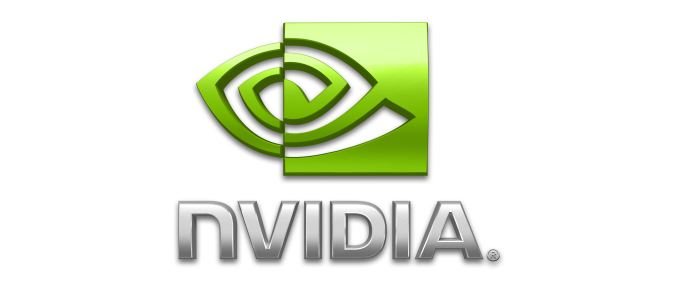

 Quote
Quote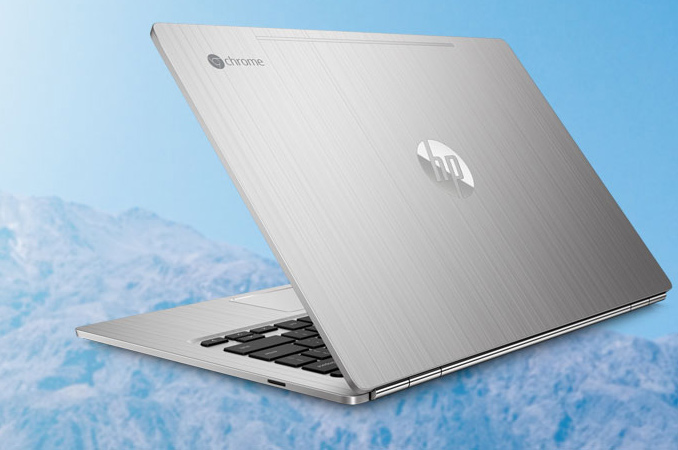
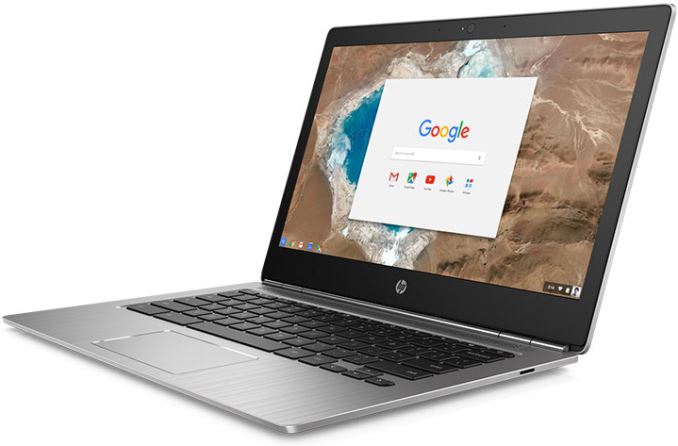

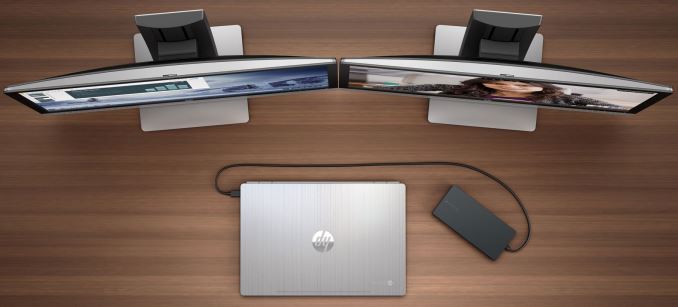
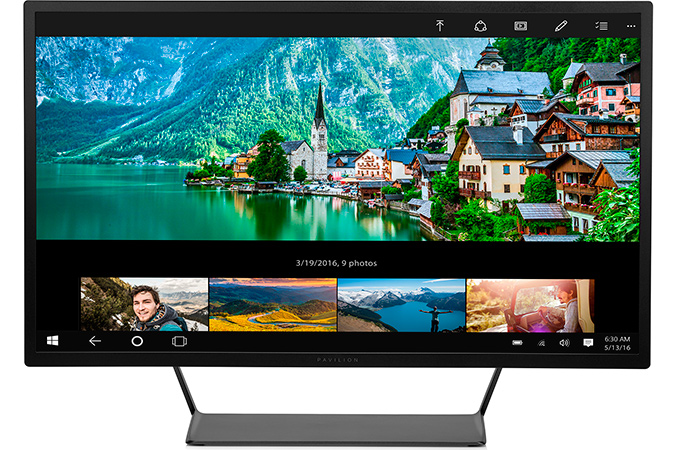
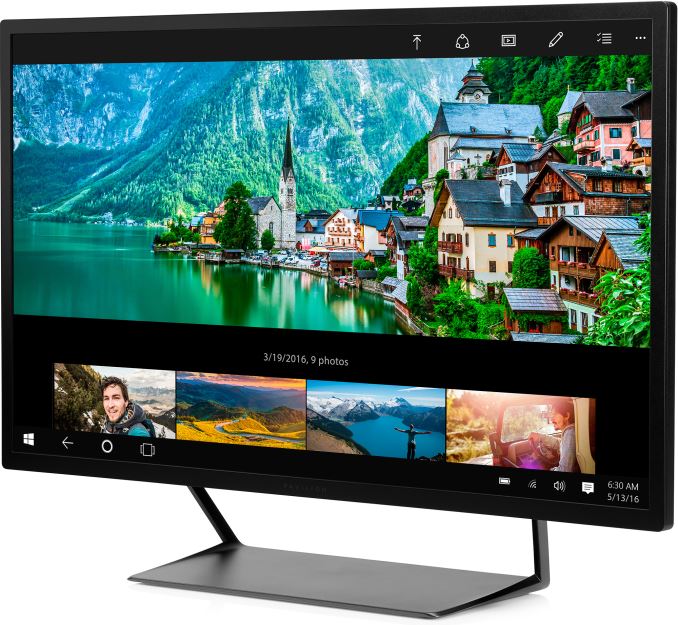


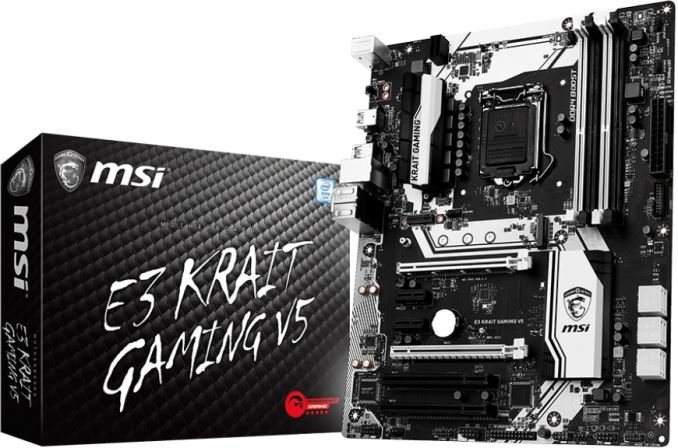
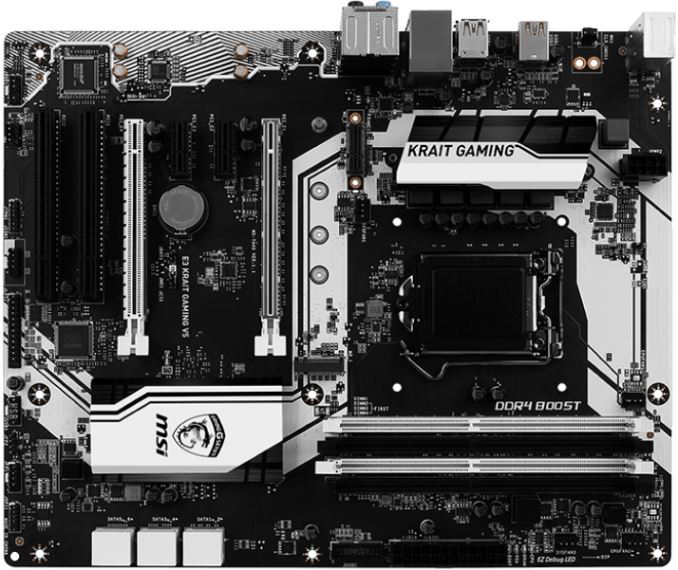
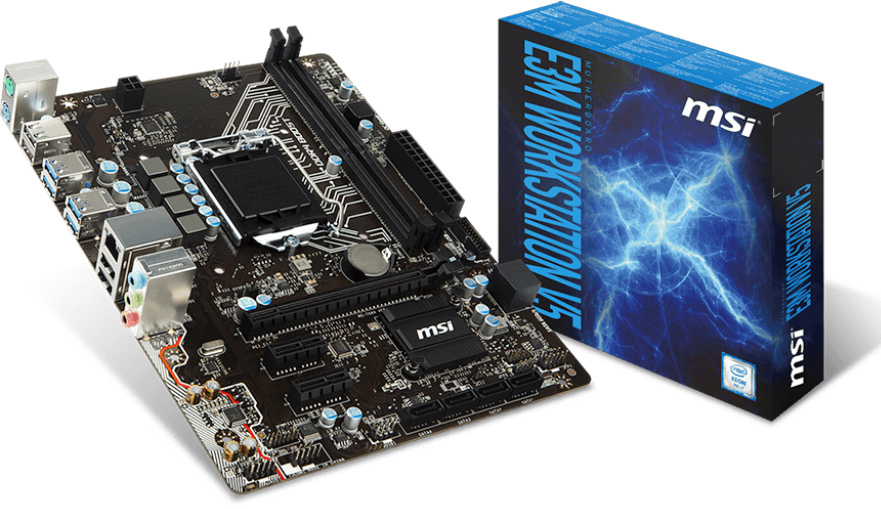
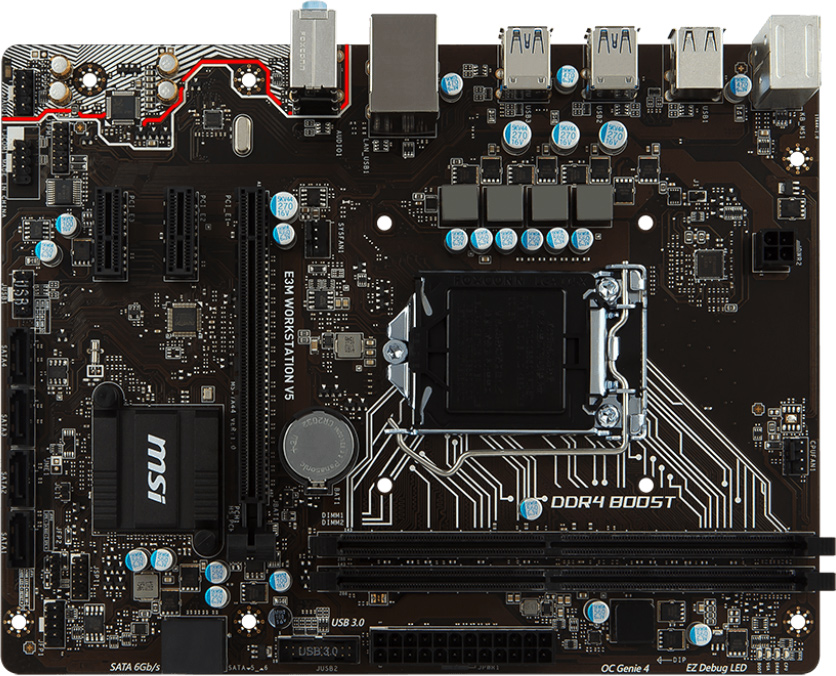
















Bookmarks